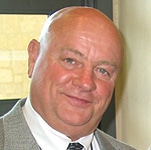Witnesses say it’s a grey sedan.
A grey four-door sedan — occupied by two men.
A grey four-door sedan occupied by two men that shows up at railroad facilities.
The men claim to work for the Federal Railroad Administration. That say they are there to inspect a bridge, or to observe train and engine crews switching tank cars in a yard.
But when asked for their identification, the two men immediately drive away in their grey sedan.
That’s the story told by a Canadian Pacific railroad bridge tender in Milwaukee, Wis., and 31 hours later by a Union Pacific supervisor 2,100 miles southwest of Milwaukee at a UP yard in Long Beach, Calif., where tank cars were being switched.
Although the bridge tender notified Canadian Pacific police, and the UP supervisor notified the FRA – both providing a description of the vehicle and the two occupants — neither was able to obtain the vehicle’s license plate number.
The Transportation Security Administration (TSA) is investigating. The FRA said that in neither of the reported incidents were their employees nearby.
For it to be the same vehicle and same pair of men in Milwaukee and Long Beach — 2,100 miles apart — they would have had to travel non-stop at 68 mph for 31 hours.
So, could they be separate sets of federal officers in a similar sedan testing security awareness? If not, then …?
It’s the, “If not, then … ?” that is so properly worrisome in this era of worldwide terror attacks.
The FRA and TSA continue to remind front-line rail employees that they are the critical eyes and ears first able to spot and report potential terrorist activity.
Advises the FRA and TSA:
* Request credentials of any person claiming to be an official government inspector, law-enforcement officer or representative.
* When observing a suspect vehicle, record its description (type, color, make, model, number of doors) and license plate number.
* Stay vigilant for suspicious people, behaviors, activities, and objects at and near rail facilities.
* Report potential security concerns to the railroad’s communications or operations center, following individual railroad procedures for such reporting.
* Review these procedures with other employees and supervisors during awareness briefings.
